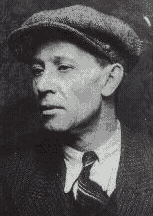7.
Prosper Dezitter
"l'homme
au doigt coupe"
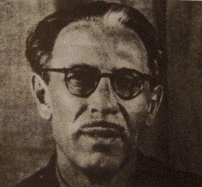
In
Brussels, working throughout the war was the notorious traitor Prosper
Dezitter "the man with the missing finger". Born in Paschendale in
Flanders on the 19th September 1893, the son of Peter Dezitter. He fled to Canada in May 1913
after being convicted for rape in
Ypres and sentenced to three years imprisonment. He crossed the Atlantic from Manchester via Liverpool to the USA on the SS Megantic
leaving on the 13th May continuing to Quebec and arriving on the 21st May
In 1918 he was living
in Kennedy Street Winnipeg when he was called up for service in the
Canadian Expeditionary Force, Manitoba Regiment. He was discharged
after 10 days presumably as he ws selected to join the RAF. He then re-enlisted with the RAF in Toronto Canada and
served for 99 days until the 21st December 1918 training as an
observer. I suppose he was then no longer required as the war had ended. On his enlistment forms he is described as single, a Roman
Catholic, his civilian job a detective, next of kin, his father, Peter
and a
sister, Elzer, both living in Arnage Sarthe,France. His physical
description was 5ft 6½in tall, dark complexion, light brown
eyes
and black hair.
In September of 1919, in Winnipeg, he married a 19 year old
English girl called Lillian Stanbury, on the marriage certificate 25
year old
Dezitter calls himself Jack Prosper and describes himself as
a detective, an Anglican, born in Boulogne France the son of Pierre
Dezitter a farmer. His address then was 397 Hargrave Street Winnipeg.
It seems he left Canada in December 1926 and returned to Belgium. He then was
a car salesman in the "Permeke Garage" in Antwerp, he also worked in
his own company "Auto Office Dezitter & Co".
He also spent at least 6 years in prison in
Bruges for embezzlement and "escroqueries au marriage", marriage fraud.
He was
divorced from his then wife
Germaine Princen in 1939. His
police record showed he still had an outstanding prison sentence for fraud of six
years. It may be that he was in prison when the Germans invaded in 1940
and he was released by them.
In 1938 Dezitter had began a relationship with Florentine
Dings born as Florentine Girault in Barcelona in the 20th June 1904. Florie was at
that time married to Paul Dings and had a young son born in 1930.
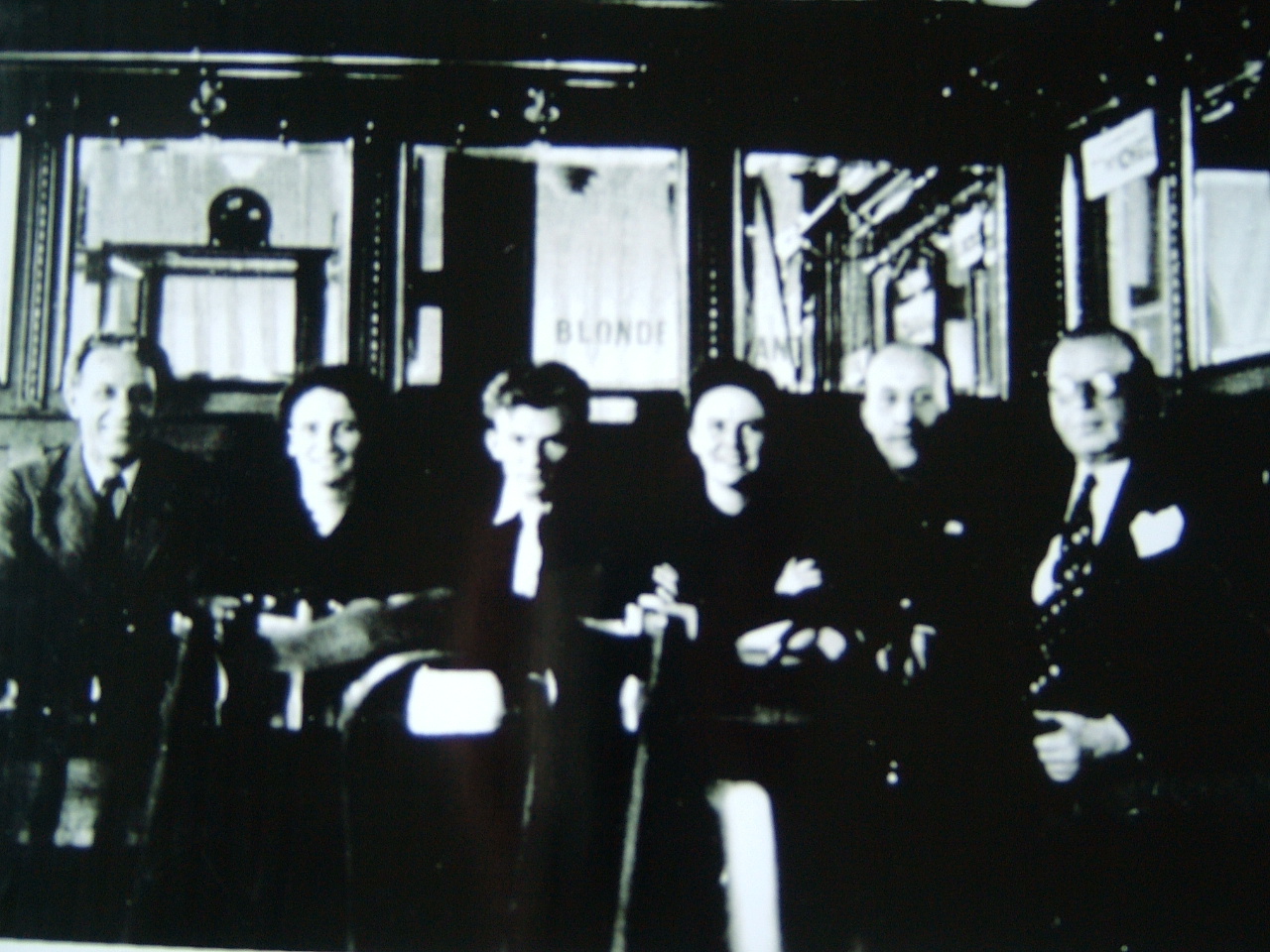
In
a Brussels cafe 1941, some sources say this is, from the left, Dezitter, Florie,
a radio operator, Tamara (friend of the radio operator), Nestor and
Nootens.
From the start of the occupation, with his mistress and later with a man called
Charles Jamart, Dezitter managed to infiltrate many of the groups who
were
helping Allied soldiers and airmen. In 1941 they were responsible for
the
arrest of several escaped British soldiers and their helpers in the
village of Flobecq. He was also probaby assisted by the two British
soldiers, Joe and Jimmy in Brussels, who he used to trap other soldiers
in hiding. He
posed as a Kings messenger or an
English or Canadian airman and used numerous false names and alternate
identities, Jack Kilanine a Canadian, William Herbert Call (a Londoner)
or Williams. Later in the war he pretended to be a British Officer in
Brussels " Captain Jackson" and led numerous airmen to Gestapo traps in
Brussels & Paris. His nickname "l'homme au doigt coupe" was
because he had lost the first joint or two joints of the little finger
on his right
hand, he often wore a glove to hide this.
He had lost his finger during an accident in his car business
(he was smuggling cars between Belgium and the Netherlands) back in Antwerp.
He always carried a
revolver
and an identity card of the Gestapo with the words "Group 16" and a
pass bearing the words "Order
to all German or Belgian
police. To leave at liberty in all circumstances."
In Brussels in 1941 he frequented the Cafe des Arcades on the corner of
Rue Hancart and Chaussée de Haecht, the home of Flore Dings,
94 Rue Vandeweyer, the terminus of the 33 tram and the Restaurant
Uniprix.
His police records say he
sometimes wore tortoiseshell glasses for reading, he had dark brown
hair combed
back and greased with a broad white streak going back from his
forehead., He sometimes had a small black moustache. Dressed in a
sports
suit in green or brown, slight limp in left legand
usually wore brown or grey socks. He had gold
fillings in a front tooth,
sometimes he wore in his buttonhole the badge of COFAG
(Confédération des Fraternelles
d'Après-Guerre) showing himself to be a veteran of the
Belgian forces.
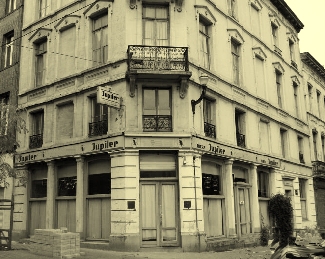
Cafe des
Arcades
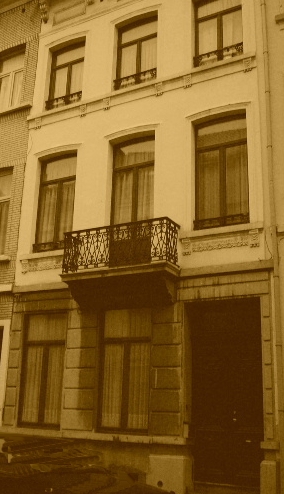
Florie
Dings apartment at 94 Rue Vandeweyer
Later in the war, in 1943, he operated in the Ghent area as "Commander
or Captain Willy".
The
"Safe House" in avenue A. J. Slegers.
In July and August 1943 Dezitter was running a "safe" house and fake
escape line in Brussels. First in
an apartment at 369 Avenue Slegers near to a block of flats called
Josephine-Charlotte. Dezitter seemed to have connections to genuine
escape organizations in Holland and other parts of Belgium such as
Antwerp. He also made sure to cultivate priests and other religious
officials who he knew the desparate evader would turn to in the first
hours after he had survived the loss of his aircraft. The priests
believing Dezitter to be genuine would contact him if they knew of an
evader in hiding. Florie and another woman would drive out of Brussels
to collect the airmen or they would be met at a Brussels station by
large black American cars marked with Swiss Embassy signs driven by Dezitter or
Florie who described herself as the "Captain's" secretary. The
gang had several vehicles at their disposal, one a 1939 Graham (see
below) with the registration number CC160615 or 161515 also a
Chevrolet, a Peugeot and a Citroen.
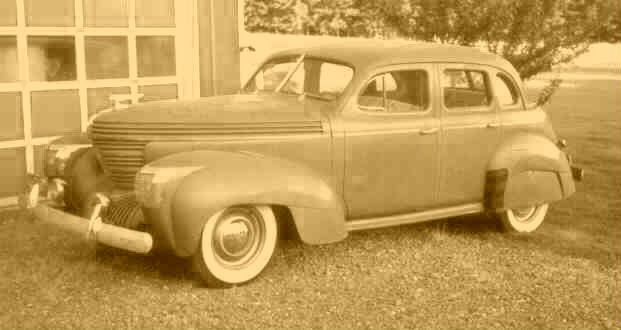
One man with first hand experience of Dezitter's operating methods is
Fred Heathfield, who was then a Halifax pilot in the RAF. On
the night of 21st June 1943, on a bombing run to Krefield in the Ruhr,
Fred aircraft was hit by flak and he and his crew had to abandon the
aircraft. Fred stayed with the aircraft and survived the
crash landing without injury. After several weeks of adventures with
the Resistance in Louvain and Brussels he was staying with a Nurse
Collet in the Rue Melson in the St Catherines district of Brussels as
arrangements were made for his return to England.
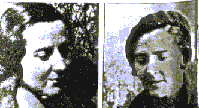
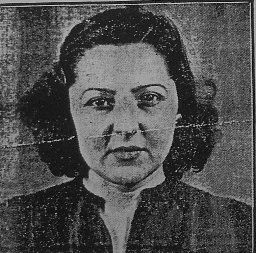
Florie
Dings
One day he heard
Nurse Collet on the phone say
" Yes, there is a parcel for collection" .
Soon a young woman came to the apartment opened the door with her own
key and said
" I am with the Captain. The car is outside. Come quickly"
Fred went outside onto the street and a
black Citroen Traction Avant saloon stood by the
kerb. Inside the car he shook hands with the Captain and
noticed straight away that he had a finger joint missing. He
was a well-built man , with thick grey hair, heavy horned
rimmed glasses and a strong Canadian
accent. Fred sat next to him as they drove off to
collect the British soldier Pollock who posed as a lieutenant
captured in Greece who had escaped from a POW camp in
Germany. They then picked up two more Canadian airmen before
arriving at the basement garage of 369 Avenue A. J. Slegers, a smart
modern apartment block in the suburb of Woluwe St. Lambert.
Ascending the green marble or slate staircase the party found
themselves in the hall of the building where they were greeted by
Derrick Hawthorne an airman known to Fred who had been in Brussels a
long time being treated for his injuries by Nurse Collett. Continuing
up the green staircase they came to the large L-shaped lounge where
they met the rest of the occupants, Jock McVittie, Paddy Croft, Jimmy
Guy, Jimmy Brazil and Reggie Giddey. On a large mirror at the
end of the room was a large mirror with a notice titled " STATION
STANDING ORDERS" and a list of rules, at the bottom it was signed by
D.E.L.Wilson Group Captain A.16. RAAF. McVittie explained that no one
paid much attention to the notice especially now the Group Captain had
left. Jimmy Brazil told the group how angry he was at the
actions of his skipper Squadron Leader Carpenter, a South African
regular officer, he had abandoned the aircraft before all the crew had
escaped. The next day Carpenter arrived in the house and Jimmy
immediately attacked him and had to be pulled off him. Carpenter made
the excuse that he had not known anyone had been left behind
which was not the right thing for a Lancaster pilot to say. After the
war both Wilson and Carpenter were investigated for their mis-demeanors
after capture but in both cases "No Further Action" was taken. For
Carpenter in particular, who seems to have had right-wing links in
South Africa, and was to end his wartime career living in Berlin,
shoplifting to make
money to buy alcohol, it seems a very strange decision indeed.
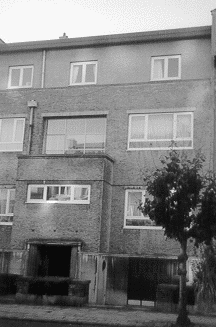
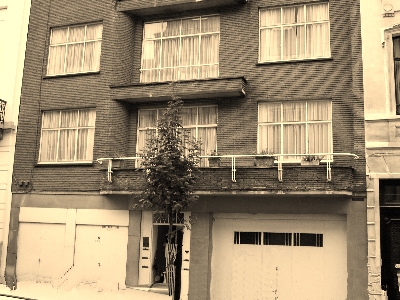
The false safe houses in avenue A.J.Slegers (left) and the Rue
Forestiere (right)
Dezitter was a very plausable man, his years in Canada enabled him to
speak and understand English very well. The Belgians he
worked with very often fooled into thinking they were working for a
genuine British agent and a real escape line. The Allied
airmen he ensnared were only to ready to trust the escape route
offered, it was all they had.
Over 70 RAF
airmen were led
to Gestapo traps from the safe houses in Brussels, add to that number
the many USAAF airmen trapped , other airmen from Antwerp,
Bruges
etc and British soldiers in 1941, plus all the Belgian helpers, agents
etc.
betrayed gives us a total of several hundred
Dezitter
victims.
A girl
called
Anny.
One day in January 1943 Flore Dings met by accident, Anny Lall (or
possibly Annie Laal or Anny Lally), an
Estonian nurse she had known before the war. Anny had a tall slender
figure, was blond and good-looking. Born in Terlu Estonia on the 22
December 1904, she spoke French with a pleasant
accent. She lived in a modest apartment on the first floor of house
number seven
in the rue Paul Segers in the Brussels suburb of Etterbeek.
It consisted of a living room, a
small kitchen, a hall and bedroom. The
apartment and the furniture were the property of her Swiss
fiancée to whom she had been engaged. He was caught living
in Switzerland due to the outbreak of war. She hoped to marry him after
the war and continued to receive letters from him via the Red Cross.
Anny made hats, sewed and repaired clothes to support herself. To help
her out, Florie began giving Anny her sewing work to do. This was how
Anny first met Prosper Dezitter.
De Zitter later described her as: "… a 'trustworthy' and better a
'neutral person', because she was not a Belgian. She was simply an
innocent … a spectator to events ..."
Because Anny was very short of money, she allowed Florie and Dezitter
to use her apartment at rue Paul Segers, as a 'Mail-Box' as a
substitute for one at their own home at Avenue A.J. Slegers they also
also had a telephone installed with the number 48.51.19.
Crafty … Florie and Prosper 'borrow' on the name of the road and the
name of the avenue: Rue Paul Segers and avenue A.J. Slegers. It is easy
for anyone to make a mistake about the address.
When Anny received a letter at her home she would telephone
Florie. For every
letter Anny handled, she received one hundred francs. Anny was not
curious and asked no questions. While they never told her anything
about their activities, they knew that she suspected that De Zitter and
Florie were part of an unknown secret spy network helping allied
soldiers and that she was a link in this organization.
Anny rented her apartment, twice for small meetings and on three other
occasions it was used for radio transmissions she was never present at
these events herself and did not know what it happened there during her
absence. She was also paid a hundred francs for each of these sessions.
This service, the numerous letters and cables began to allow her to see
her own role in support of the organization. During the months that the
apartment did service as a mailbox, Anny received the visits of many
different people. Over time it become a confusion of men, most of whom
were later identified as having been his agents.
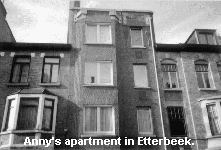
Many intelligence agents thought that Anny and Florie were the same
person.
Dezitter and Florie encouraged this disception. Florie had a false
identity card made up in which she used duplicated Anny's identity. The
consequences could not remain not too long in doubt. It cost Anny her
life. She was murdered and around this murder there still hangs a haze
of obscurity. She was assassinated on the 29th September 1943 outside
her
flat in 7 Rue Paul Segers by twenty two thrusts from an awl, a pointed
hand tool.
It seems that Anny was the person who exposed the false escape line and
safe house at the Avenue Slegers. As a result Dezitter was forced to
move the setup to the Rue Forestiere. So it may have been Dezitter,
Flore
and gang who killed her or some German intelligence
organization.
It may be that the consequences of Flore using Anny's identity were
that she was killed in the belief that she was Flore by the Brussels
resistance.
The truth, forever locked in the murky world of Dezitter's double
dealings, will probably never be known.
In July 1944 as the allied armies approached Brussels De
Zitter supposedly met with Himmler at a meeting in the "Shell" building
in Brussels where he was appointed head of the
post-liberation "resistance" for Belgium,
the Netherlands and Northern France.
After
the war ended Dezitter and Dings were arrested in Wurzburg Germany whilst being
hidden by a German resistance movement and were
brought back to Brussels. They were tried and found guilty.
On the 17th September
1948 at 5.45 in the morning Dezitter was woken by the alarm call at the Police Barracks in the avenue de la Couronne.
At 6.05 he was executed by a firing squad of gendarmes.
With
thanks to Fred Heathfield, Michael Le Blanc
and Oliver Clutton-Brock's book "Footsteps On The Sands Of
Time".
Some Of the Airmen caught in Dezitter's False "Safe" House
Surname First Names Rank Nationality Squadron Date of Arrest Place of Arrest
John I Anderson Fl/Lt Can 405 15/07/1943 Bordeaux
William Cecil Anderson Sgt Can 619 07/08/1943 Paris
James Guy Aubrey? F/Sgt
W T Batson P/O 50
James Leo Brazil W/O 103
Ashley William Alfred Bruce F/Sgt NZ 419 29/07/1943 Bordeaux
?/ Butenko Captain USSR 30/08/1943 Brussels
C E H Carey P/O 158
George Robert Carpenter S/L 103
William John Cave W/O NZ 15 18/09/1943 Paris
H.A.M. Clee F/O Can 405 16/07/1943 Paris
Bill Cole Sgt 09/07/1943 Paris
N F Conklin Sgt Aus 460
Clarence Reginald Craven Sgt Aus 460 14/07/1943 Paris
Patrick Norman Croft F/O 35 07/08/1943 Paris
?? Currie P/O
?? Danvoise Sgt Can
Ralph Llewellyn Davies W/O 88 26/08/1943 Charlesville
Jan Deenbat
William James N Duggan Sgt Can 419 Aug-43 Paris
Jan Dunbar
Arthur William Edgley W/O 15 09/07/1943 Paris
Leslie Edward Ellingham F/Sgt 7 17/07/1943 Paris
Douglas Esenau F/Sgt Can
Roy Evans Sgt 619 18/09/1943
Aubrey Fearneyhough W/O 77 Jul-43 Paris
Thomas James Froats Sgt Can 620
Frederick James Frost Sgt 620 02/10/1943 Paris
R S Giddey F/O Aus 467 08/08/1943 Paris
William J Glen F/Lt USAAF 18/07/1943 Paris
R G Goodenough Sgt 77
S K Gordon-Powell W/O 35
John Graham
Walter Ivor Hasen W/O NZ 7 01/08/1943 Paris
Frederick Hawthorne W/O 77 11/08/1943 Brussels
Jack Hayes
Frederick J H Heathfield Sgt 51 07/08/1943
Frank Hugo W/O 7 09/07/1943 Paris
Alan Hutchinson F/Sgt Can
Frederick Jackson W/O 97 18/08/1943 Brussels
George Arthur Jones W/O 35 03/09/1943 Charlesville
Virgil Jones Lt USAAF 30/08/1943 Brussels
?? Joseph W/O
Lawrence Lionel Kelley W/O 214 29/07/1943 Bordeaux
Douglas Charles Knight F/Lt 102 18/09/1943 Paris
T Lancashire F/Sgt 97 04/09/1943
Leroy Lawson USAAF
?? Levy 2nd Lt USAAF
John Alexander Lobban W/O 78 29/07/1943 Bordeaux
Graham J. Macrae F/Lt 158 18/09/1943 Paris
Walter J. Mullaney Sgt Can 09/07/1943 Paris
Sidney J Maxted W/O 15 09/07/1943 Paris
?? McVeddy Sgt
M McVitie Sgt 76 06/08/1943
William Cecil Molesbury
Thomas Alfred Boyd Parselle Wing/Com 207 28/07/1943 Paris De Lancaster W5001
J R R Poudrier Sgt Can 427
S Powell W/O 97 03/09/1943 Charlesville
J Redman Sgt 158 18/07/1943
C Rees Sgt 44 18/07/1943
Josef Rek W/O 138 15/07/1943 Paris
Frank Sanders W/O 90 24/07/1942 Paris
Lee Sanders T/Sgt USAAF
Kenneth Albert Shannon F/Sgt UK 427 03/08/1943 Paris
?? Smith Sgt 218 09/07/1943 Paris
?? Snyder F/O USAAF?
John James Sparrow
Fleet Spencer Can
Gordon Stooke W/O Aus 460 29/06/1943 Paris
John Thurmeier
Dennis T. Toohig Flt/Sgt 460 14/07/1943 Paris
?? Turner P/O
Isaac Walker W/O NZ 620 30/08/1943 Brussels
Douglas William Walsburry?
Eric Edmund Weare Sgt 156 03/08/1943 Paris
D E L Wilson Group/Capt Aus 76
William Wood UK
Sandy ??
Ted ??
Tom ??
The list of names is compiled from Liberation Reports from the National Archives in London
Supplemented with information from Oliver Clutton-Brock's book "Footsteps On The Sands Of
Time". Published by Grub Street ISBN 1 904010 00 0.
Information from the files in CEGES Brussels
Click on www.belgiumww2.info
to go to INTRODUCTION
next page

©
John
Clinch 2004

